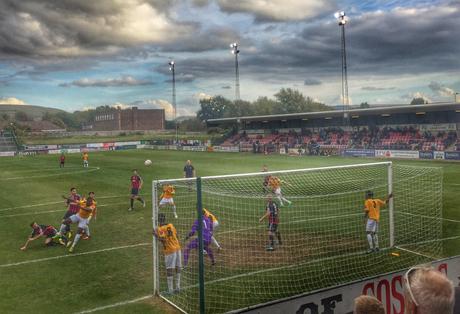“It’s all in the interpretation”
That was the final word on the matter. The referee had spoken. Case closed.
Back in the summer, along with representatives from 71 other Ryman League clubs, sat through a presentation from former Premier League referee Neale Barry, outlining the significant changes to the laws of the game, introduced by IFAB. He delivered the presentation as you would expect a referee to do so, not taking any back-chat or listening to reasoned discussion, and threatening to send off the club secretary from Wroxham for wearing the wrong coloured cycling shorts (OK – so that last one may not be strictly true). But it was our jobs to listen and then feedback the rule changes to our management team, and onto the players.
Now at this stage I want to make a very clear statement. Referees often have a thankless task, knowing that one lapse in concentration or getting a decision marginally wrong can be costly. Likewise, any contentious decision, and there will be many of these in a game, will be applauded by one team and derided by another. We’ve seen some outstanding referees this season and last – in fact last Wednesday in our win at Walton Casuals, where the referee booked five players from each side, I thought he was very good and more importantly, worked very well with his assistants. When we have referees like that I will always make a habit of telling them they had a great game. Likewise we’ve had some poor officiating teams (and that’s the difference – it isn’t just one man, but three) and again I have no issue telling them in a calm manner or asking for explanations (as we are entitled to) post match.
But what happens when we understand the rules better than the officials? Well that just leads to confusion and frustration as we saw yesterday in our game against Cray Wanderers.

At that point, according to the new rules (rule 5 subsection 6 I believe) Charlie should now be allowed to remain on the pitch to take the free-kick. The old rule was very clear that any player treated by the physio had to leave the pitch but it was deemed to be an unfair rule where foul play had taken place. So the rule was changed to:-
“a player is injured as the result of a physical offense for which the opponent is cautioned or sent off (e.g. reckless or serious foul challenge), if the assessment/treatment is completed quickly” and the explanation for this change was, “It is widely seen as unfair that a player who is injured by a serious foul and the trainer/doctor comes on, the player has to leave the field giving the offending team a numerical benefit”
Our Physio questioned the decision that he had to escort Charlie off the pitch but knew full well he risked a caution himself if he didn’t comply. I tried to alert the linesman to the fact. Not even an acknowledgement. I walked round to the other side of the pitch and asked the other assistant. He at least responded although his answer of “What do you expect me to do, I am 50 yards away” was perhaps not the right thing to say – they are supposed to be a team and if he sees anything wrong surely he has a duty to tell the referee?
So Charlie has to stay off the pitch, whilst a free-kick in a dangerous position, which more than likely he would have taken, was easily cleared. Post match according to the referee, Charlie’s injury was not quickly assessed and that is why he left the field, despite the fact he was busy dealing with events elsewhere and thus the game wasn’t held up. So we are penalised for the fact one of our players was fouled? Which is exactly why the rule change was brought in.

Fortunately the 5-2 win was enough to get rid of the annoyance at the officiating but there has to be consistency in how the rules are interpreted.
Who’d be a referee?

